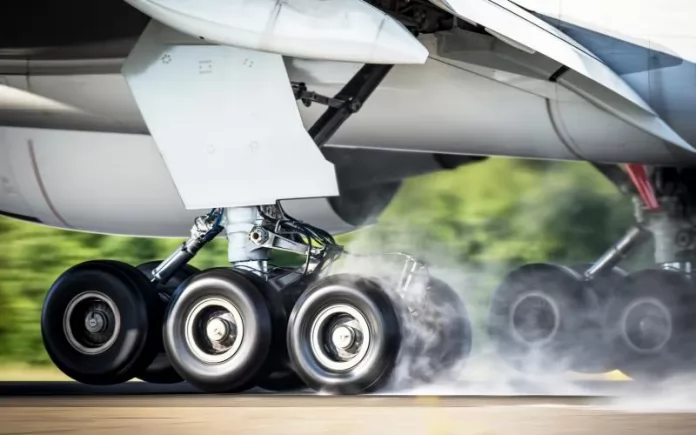The chances of a baby landing an airplane is higher than tires exploding on impact. It does make sense in expecting the tires to explode when an airplane touches the runway with the sheer amount of speed and momentum, but why don’t the tires burst like a balloon? Well, there are a lot of reasons why. Let’s dig in!


The higher the pressure, the stiffer they get. The high-flying rubber is typically inflated to 200 psi, roughly six times what you put in your car’s tire, and the tires on an F-16 are pumped to 320 psi. Each tire is designed to withstand incredible weight loads and can hit the ground at 170-250 mph, more than 500 times before ever needing to get a retread. In the first moments after a plane touches down, the tires are skidding, not rolling. The airplane essentially drags them down the runway until their rotational velocity matches the velocity of the plane, that’s why they smoke upon landing. Michelin uses grooves instead of the block patterns as are seen on your car’s rubber blocks that would simply break off. The stoutest tires are rated for speeds of up to 288 mph. Also, aircraft tires are usually inflated with nitrogen to minimize expansion and contraction from extreme changes in ambient temperature and pressure experienced during flight. And most importantly, since nitrogen is an inert gas, it eliminates the possibility of a tire explosion.

Next time you’re in the air don’t think about it too hard, but 45 inches of rubber is the only thing standing between you and the tarmac during landing.























